- HOME
- Special Features
- Ozu Enjoy the traditional treasured sweets loved by successive Castle Lord of the clan.
- Food stories
- 2025.01.28
Ozu Enjoy the traditional treasured sweets loved by successive Castle Lord of the clan.
Elegant local delicacies
Shigure is a local confectionery, treasured by locals. That includes former Ozu Castle lords. The Kato family is also related to Gessomochi, which saw the preference of the second lord Yasuoki Kato.
'Rikka no Utage' enhances the rich flavours of Japanese chestnut .
Explore the charm of local delicacies, hidden in its narrow alleys and quaint atmosphere.

The treasured confectionery of Ozu clan's Edo mansion is here.
Shigure (delicacy) a unique traditional sweet from castle-town Ozu
18th century -mid Edo period-. It is said that Shigure, Ozu 's representative local sweet, was created by this time. It is still being produced today. Generation after generation, inheriting and developing its own recipes. Its looks differ from the vivid colours that characterize the so-called typical Japanese confectionary. Nonetheless its texture and depth of flavours is unparalleled. Its rich uniqueness shines through. A consequence of the careful handwork behind its elaboration. Simple and straightforward. Here is one way to enjoy Shigure.
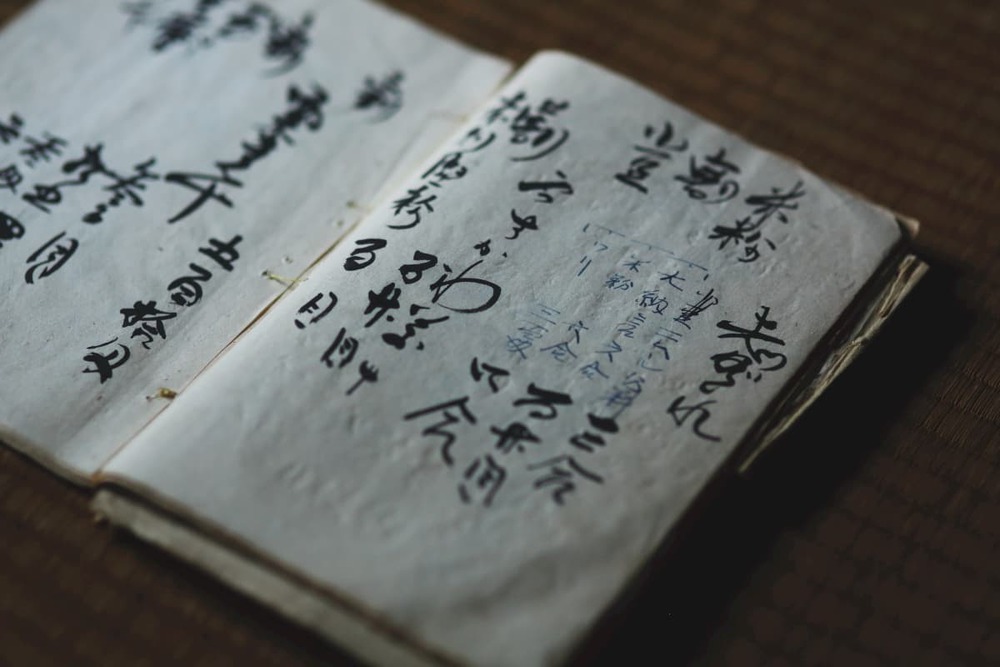
Shigure is said to have its origins in the early 18th century. Since then it has been treasured by locals of all sorts, including Ozu Castle lords. If you visit some of the long-established stores, you will have the chance to be shown carefully preserved bookshops, containing shigure original recipes and that have been passed down from generation to generation.
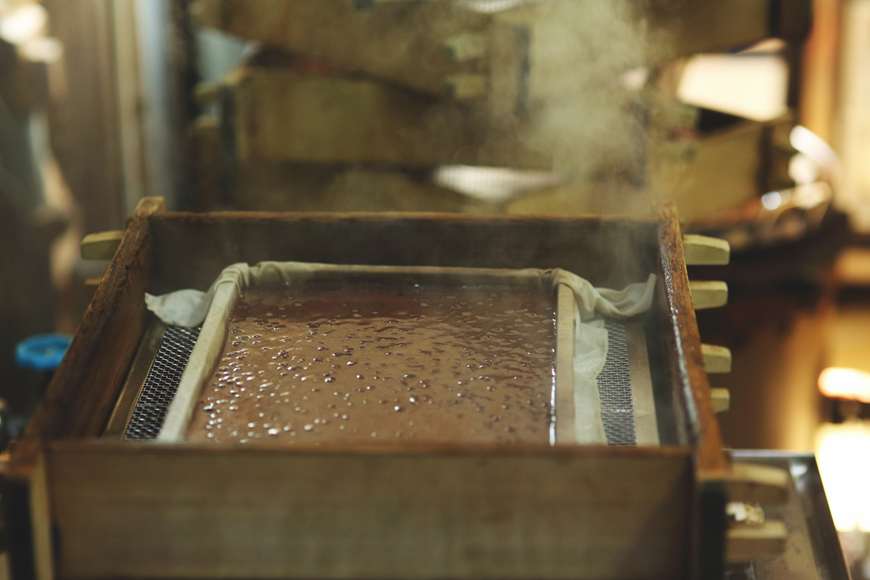
Shigure texture is chewy, which is unusual for a Japanese confectionary like yokan. Therefore, some local people refer it as shigure-mochi. The ingredients are Hokkaido-produced azuki beans and domestically produced rice flour. To this, high-quality Hiji River water is added, bringing in a unique local flavour.
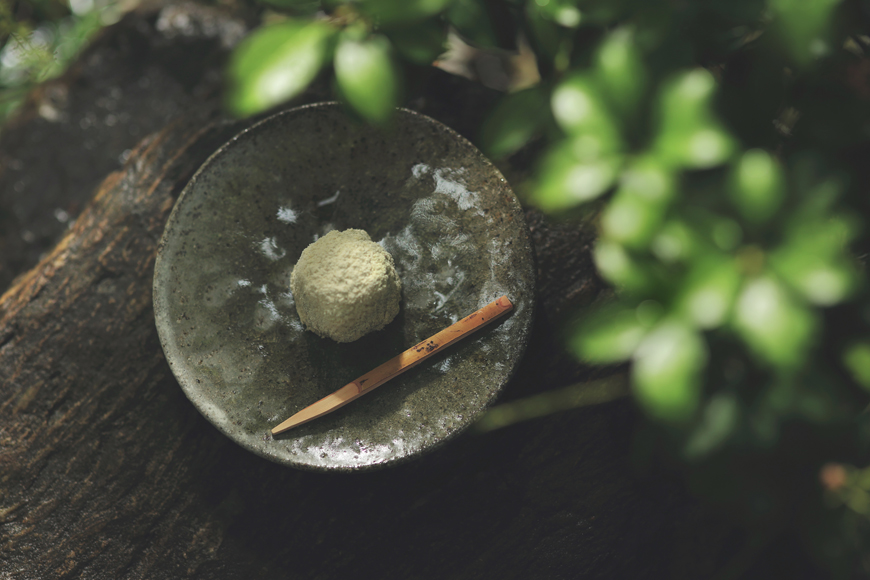
Warabi mochi conceived for Ozu Castle Lord
Gessomochi' has been produced in Ozu, by selected confectioners, since the first year of Kan’ei era.
During the Edo period, Gessomochi mochi was a favourite confectionery of the feudal lord of Ozu. In particular, the second lord of the domain, Kato Yasuoki. Gessomochi is a very delicate dish that seemed to reflect his state of mind. A soft-textured bean paste at its core is wrapped in warabi mochi. The ensemble is sprinkled with green soybean flour to form this three layered treat. A tradition that has remained unchanged for approximately 400 years.
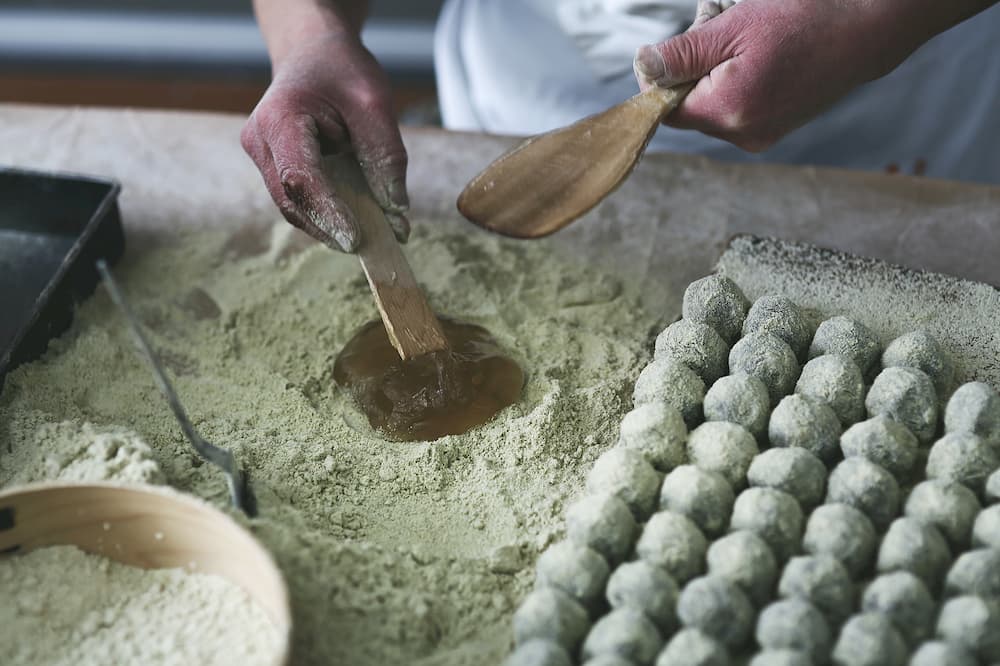
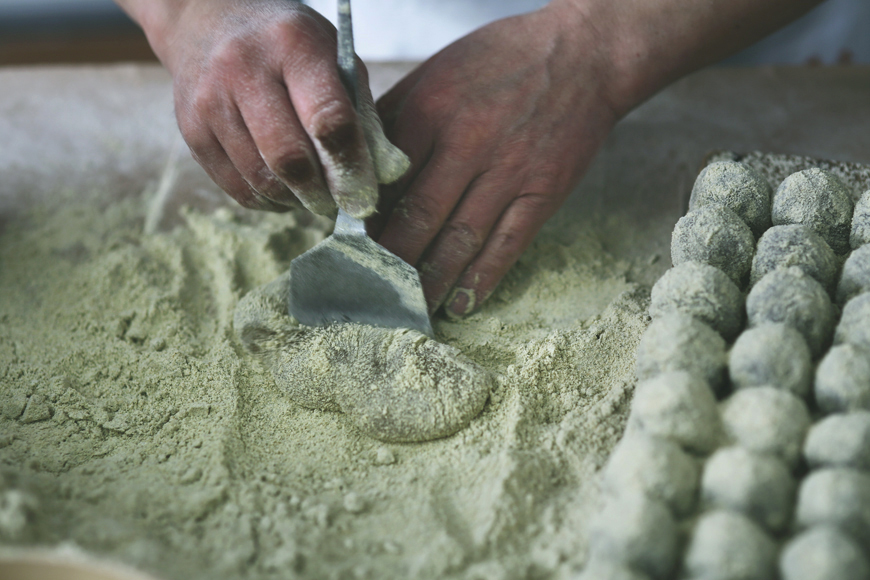
Gessomochi consist of a mochi layer wrapping red bean paste from Hokkaido and sprinkled with genuine bracken flour (made from locally produced bracken flour) which is nowadays rare in Japan. Unlike other sprinkling powder, the bracken flour for the Gessomochi has a blackish amber colour and a bit of elasticity. Locally produced green soybeans are used for the mochi. This needs a lot of balance. If too sweet, the ground green soybean will taste grassy. If too much grounded, the flavour will not be vibrant. The water used needs to rest in a vase for some time before being poured to the mix. No time or effort is spared to make Gessomochi by hand.
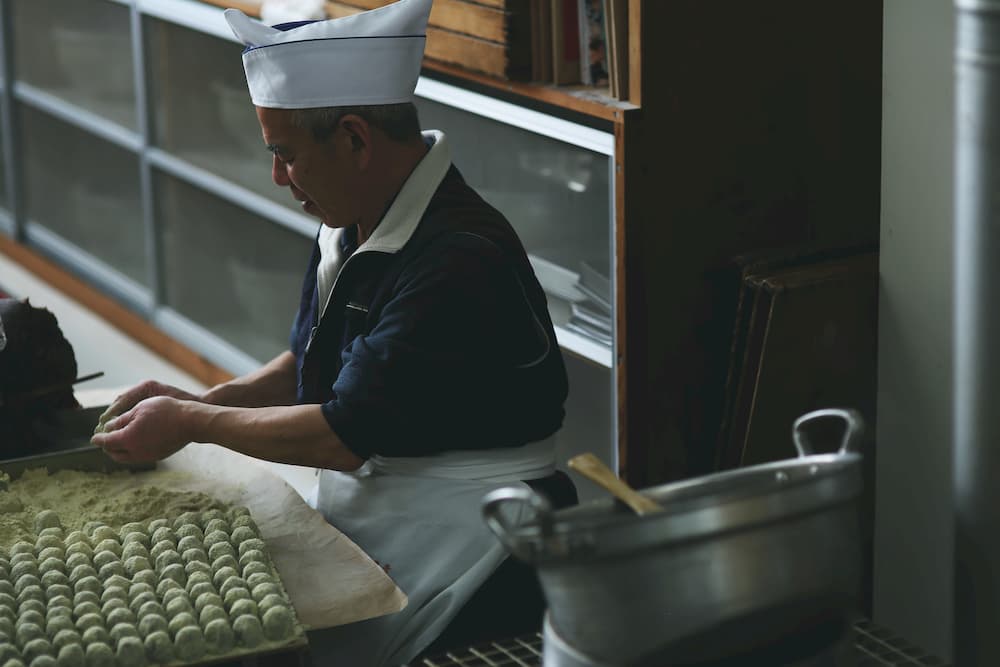
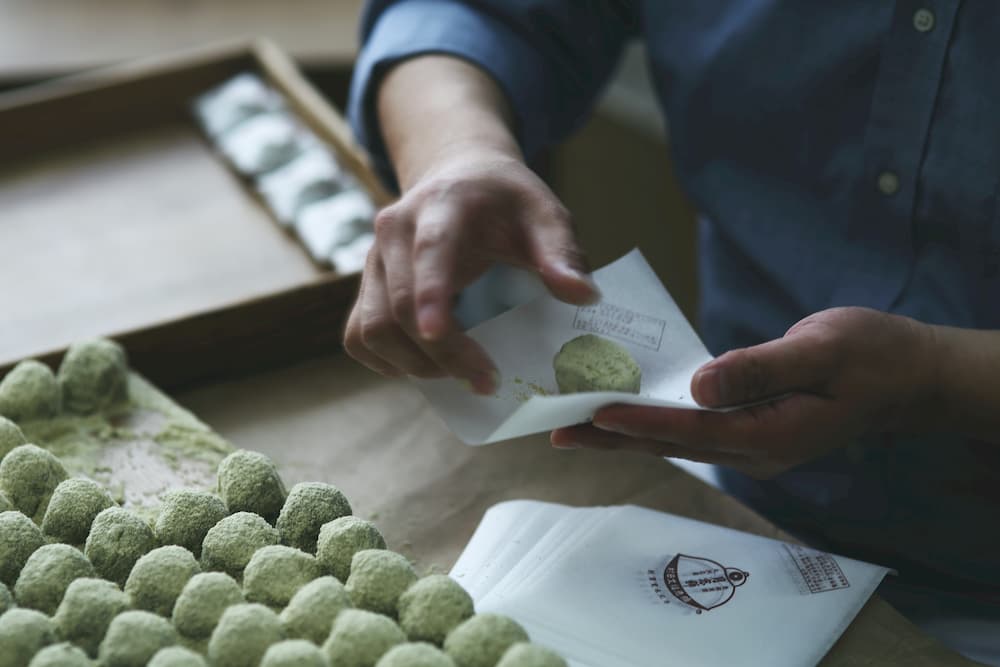
A tiny delicacy in size, but with a myriad of tones attached to it. And with a dignified appearance. The slightly greenish soybean flour gives off a faint aroma of green soybeans. Kato Yasuoki was impressed by the soft texture of the rice cake, the deep flavour that blends the sweetness of the high-quality bean paste and the flavour of green soybeans. Regardless of the era, its delicate taste seduces many. Once you try it, you will fall in love with it.
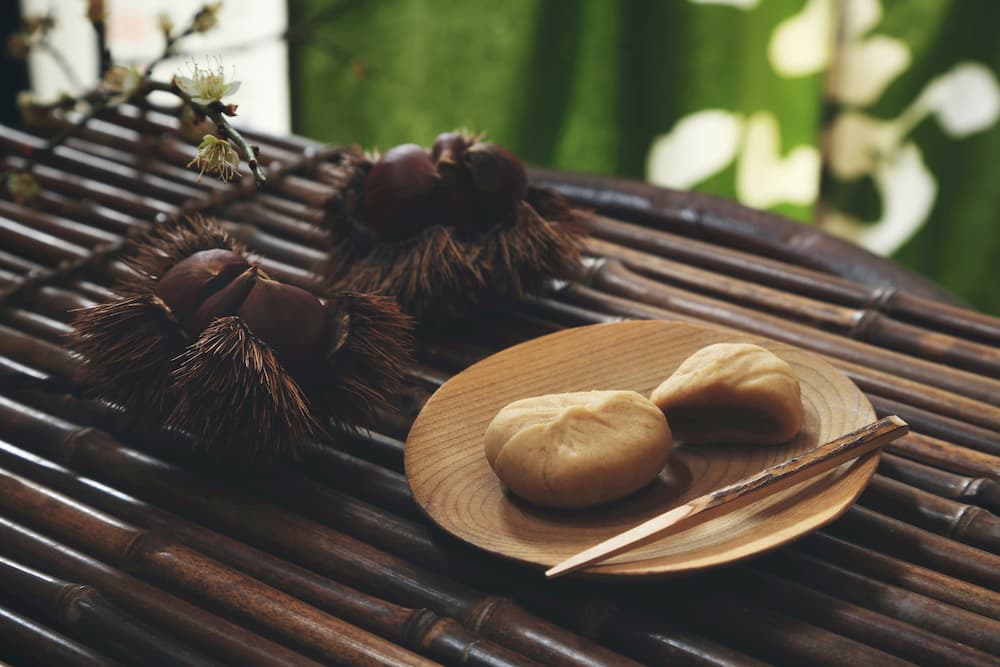
Understand the deep deliciousness of Japanese chestnut paste
Rikka no Utage' is a rich chestnut delicacy made using only Ozu chestnuts.
Rikka no Utage' was born in Ozu, a place renown for its chestnuts. This is a fairly modern delicacy that uses only local chestnuts. Red bean paste, at the core of this treat, is made from strained Hokkaido-produced adzuki beans. Then it is wrapped in pure Ozu-grown chestnuts and moulded with damp linen cloth. The chestnut paste is strained twice and has a smooth texture. The rum added to the chestnut paste brings out the chestnut flavour.
Although it is not well known, Ehime Prefecture is the third largest producer of chestnuts in Japan. In particular, the hilly and mountainous region of Ozu has a significant rainfall, day-night temperature split and appropriated soil. A suitable climate resulting in the highest production volume in the prefecture. Many varieties such as Tsukuba, Rihei, Kurakata Amakuri, Ginyose, Ishizuchi, and Ozu Wase are grown. Harvesting season begins around September, offering the taste of autumn.


Rikka no Utage is a sophisticated treat, matching any and every special occasion. You can also use enjoy it in tea ceremony or pair it with black tea or coffee. Thanks to hints of rhum it has a rich expression that goes with the sweetness and richness of chestnuts. A real treat.
Stay up to date on event details and featured offerings via the official Instagram page.Back to Articles


